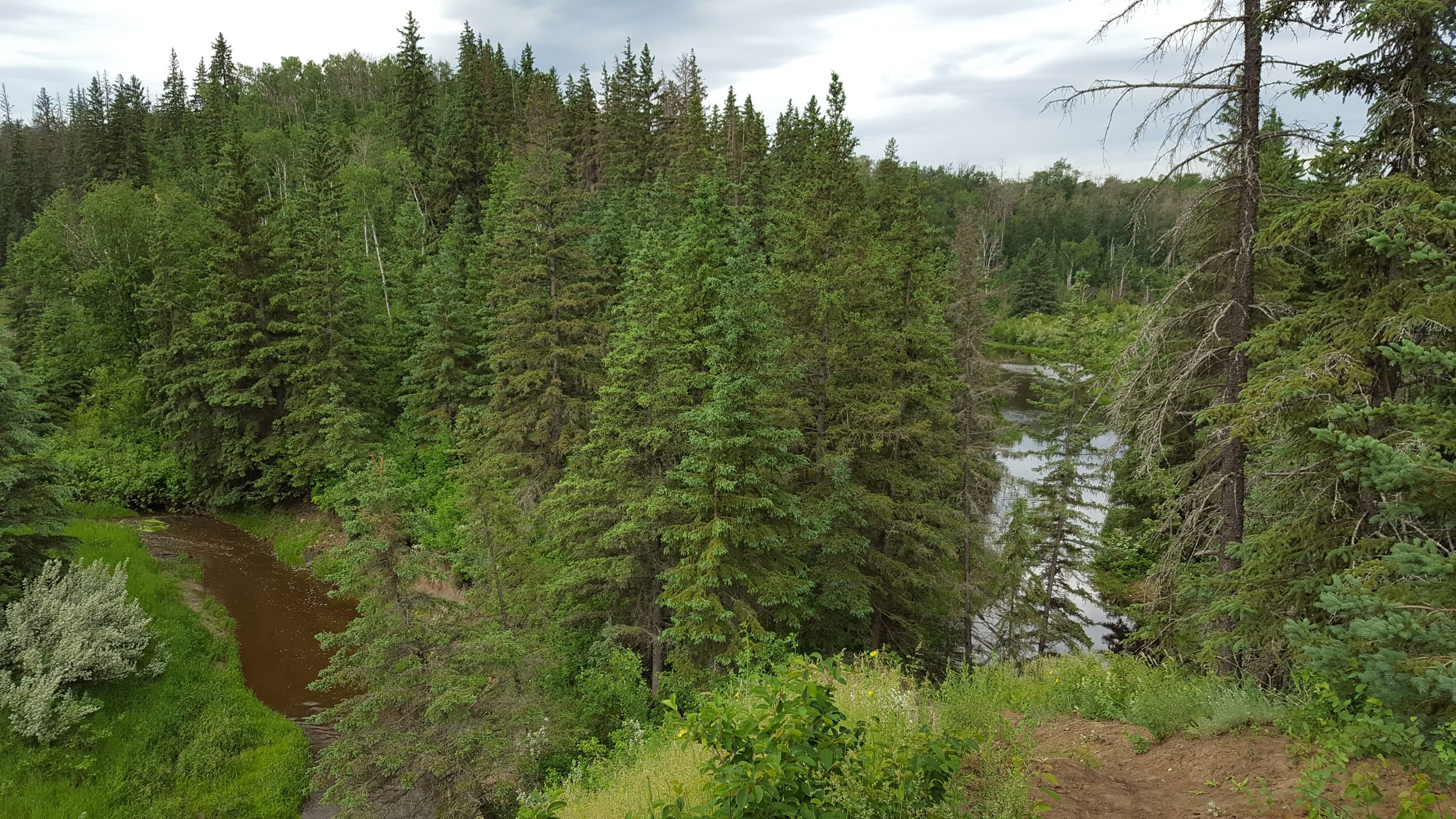Larch Sanctuary by EALT

Make Larch Sanctuary in Edmonton your next nature destination.
Alberta is a great place to live. It’s a big beautiful province full of all kinds of natural wonders. This is where we introduce you to the diversity of wildlife and unique and interesting wild spaces that are part of our big Alberta backyard. In this issue, you will learn about Larch Sanctuary in Edmonton which is part of the conservation lands protected by the Edmonton and Area Land Trust (EALT).
If you live in the Edmonton region, there is a good chance that you’ve visited at least one of the many parks or natural areas along the North Saskatchewan River. Edmonton is known for its famous river valley and interconnected green spaces. What you may not know is that there are some hidden gems along the creeks that feed the North Saskatchewan River. One of Edmonton’s hidden treasures is Larch Sanctuary, nestled along the Whitemud Creek, south of the North Saskatchewan River.
EALT worked with the City of Edmonton to place a Conservation Easement on this land, which provides Larch Sanctuary with an additional level of protection, and other benefits.
Here are a few reasons why you’ll be amazed by Larch Sanctuary and will want to make it your next nature destination.
It has an oxbow lake
What is an oxbow lake? It is a body of free-standing water that used to be part of a creek. Over hundreds of years of meandering, Whitemud Creek found the path of least resistance and left behind the curved bend that is now known as an oxbow lake. An oxbow lake provides still water for animals like beavers, ducks and fish to live.
The biodiversity is amazing
Whitemud Creek is a major wildlife corridor for animals to make their way around and through Edmonton. During your adventure in the Larch Sanctuary, there is a chance you’ll see our largest woodpecker, the pileated woodpecker, as well as many other birds, deer, coyote, moose, fox and many types of trees, shrubs and other plants.
There’s a bee hotel
EALT wanted to make sure pollinators have a place to sleep so they built them a five-star hotel. You might be wondering, “Don’t bees live in hives?” You are correct, but there are some types of bees that are solitary, which means they live alone. Some solitary bees nest underground and some nest in tunnels. A tunnel could be a natural one in a tree, left by a burrowing beetle, or it could be in a bee hotel. Bees lay their eggs in the holes in the hotel and, in the spring, the eggs will hatch and the bees will begin their important work of pollinating plants.
There’s a bat box
The Little Brown Bat is commonly found in the Edmonton region, but it is an Endangered species in Canada due to the threat of White-nose syndrome. EALT installed a rocket bat box, which can hold a couple hundred bats, at Larch Sanctuary to help provide additional habitat.
It is recommended that you visit Larch Sanctuary in the summer or fall when the trails are dry. Learn more about Larch Sanctuary www.ealt.ca/larch-sanctuary.
Join Us!
Receive our E-newsletter

NATURE ALBERTA
email: info@naturealberta.ca
phone: (780) 427-8124
mail: 3rd Floor, Percy Page Centre
11759 Groat Road
Edmonton, AB T5M 3K6
Nature Alberta is incorporated as the Federation of Alberta Naturalists under the Alberta Societies Act and is a registered charitable organization.
Registered Charity
#118913896 RR0001
